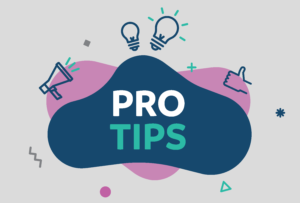Learn the Lingo: Medicare FAQs
Becoming eligible for Medicare is a whole new world, with all new words! But have no fear. We help you learn the Medicare basics by clarifying unfamiliar terms and abbreviations. Navigating your healthcare options means understanding the lingo, and answering your most frequent questions.
What is:
Medicare Part A: One of two parts of Original Medicare and often called hospital coverage, it covers inpatient benefits, including hospital stays, skilled nursing facilities, hospice care, home health, and nursing home.
Medicare Part B: The other of the two parts of Original Medicare and often called doctor coverage, it covers preventive services, medically necessary outpatient services, such as doctor visits and supplies.
Medicare Part C: Also called Medicare Advantage (MA), these plans are offered by Medicare-approved private companies that must follow rules set by Medicare. Often called all-in-one plans, MA plans give you hospital insurance, doctor insurance, often include drug coverage, and some benefits Original Medicare does not provide, including vision, dental, and hearing. Some even cover wellness programs and fitness memberships, transportation, and stipends for over-the-counter necessities.
Medicare Part D: Provides prescription drug coverage. Private health insurance companies administer these plans.
Initial Enrollment Period (IEP): The 7-month period when you can sign up for Medicare. IEP begins 3 months before you turn 65, includes the month of your birthday, and ends 3 months later.
General Enrollment Period (GEP): This enrollment period is available to you if you missed your Initial Enrollment Period and don’t qualify for a Special Enrollment Period. You can sign up between January 1-March 31 each year; however, you may have to pay a monthly late fee. Your coverage starts July 1.
Open Enrollment Period: Also called the Annual Enrollment Period (AEP) by insurers, this runs from October 15 – December 7 each year, and this is when you can join, switch, or drop a plan. Your coverage will begin on January 1 (as long as the plan gets your request by December 7). During OEP you can:
- Change from Original Medicare to a Medicare Advantage Plan
- Change from a Medicare Advantage Plan back to Original Medicare
- Switch from one Medicare Advantage Plan to another Medicare Advantage Plan
- Switch from a Medicare Advantage Plan that doesn't offer drug coverage to a Medicare Advantage Plan that offers drug coverage
- Switch from a Medicare Advantage Plan that offers drug coverage to a Medicare Advantage Plan that doesn't offer drug coverage
- Join a Medicare drug plan
- Switch from one Medicare drug plan to another Medicare drug plan
- Drop your Medicare drug coverage completely
Medicare Advantage Open Enrollment: If you’re in a Medicare Advantage Plan (with or without drug coverage), from January 1–March 31 every year you can switch to another Medicare Advantage Plan (with or without drug coverage). You can drop your Medicare Advantage Plan and return to Original Medicare. You'll also be able to join a separate Medicare drug plan.
Late enrollment penalty: A lifelong higher premium Medicare may charge you if you don’t enroll when you first become eligible. There are specific late enrollment penalties for Part A, Part B, and Part D. Medicare may make exceptions if you are insured under another plan.
Medigap: Also known as Medicare Supplement Insurance. Private health insurance companies administer these plans, and they can help pay out-of-pocket costs not covered by Parts A and B, like copayments, coinsurance, and deductibles. Your 6-month Medigap Open Enrollment Period automatically starts the first month you’re 65 or older and have Medicare Part B.
Annual cap: A yearly limit on out-of-pocket expenses. Generally, you pay a monthly premium for Medicare coverage and part of the costs each time you get a covered service. There’s no yearly limit on what you pay out-of-pocket, unless you have supplemental coverage, like a Medigap policy or you join a Medicare Advantage Plan. The amount varies from plan to plan, and after your spending meets your plan’s limit, you pay no more for the rest of the calendar year.
Out-of-pocket spending: Includes deductibles and copays but excludes premiums.
Out-of-network: Any healthcare provider Medicare has not specified as preferable to a particular plan. In some plans, using an out-of-network provider may not be an option, or it may cost you more.
Coinsurance: The share of the medical costs that you pay after you’ve reached your deductibles.
Deductible: The amount of money that you have to pay out-of-pocket before Medicare begins paying for your health costs.
These are just a few of the many Medicare terms you’ll need to become familiar with.
It may seem like a lot to take in at first, but learning and understanding the Medicare lingo will help you make the most of your coverage. For a complete list of Medicare terms visit medicare.gov/glossary.


